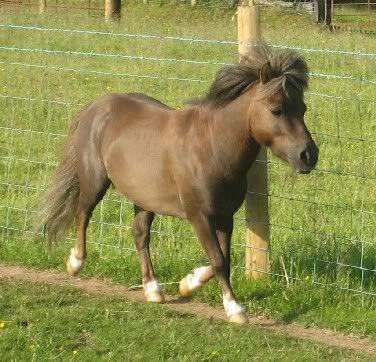Here is my Falabella stallion - Falabella Anselmo. A direct import from Argentina, he carries the Argentinian papers (ACCF) plus the British (BFS) and IMHPS. He is 31" (UK ) and is now 10 years old. The picture is a 'field' one taken a couple of years ago and I have to say that he has really only just matured this year! On his Argentinian papers he is registered as a BAYO TOSTADO which I translate as a toasted bay LOL!! I would call him liver chestnut! But have to admit that he throws multi coloured foals even from solid coloured mares. He is a gem and will be with me for ever.
By the way I heard that true Falabellas have one less rib than other horses! True or not??

Anna
By the way I heard that true Falabellas have one less rib than other horses! True or not??

Anna








